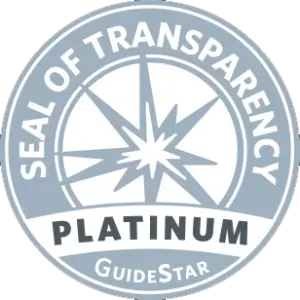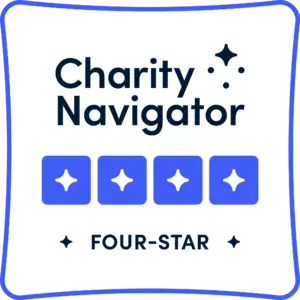What do you get when you combine a nature center, rocks and 5th graders? You get habitat restoration, of course!
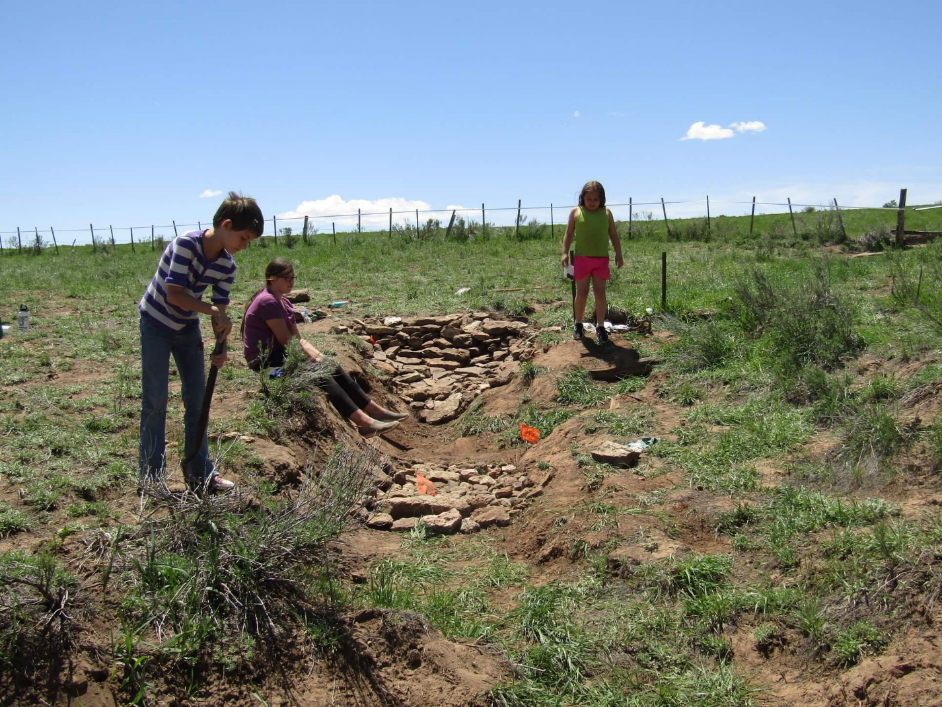
After teaching for 31 years and being a children’s librarian for a decade, Kathie Butler founded the Nature Center at Butler Corner, a place where children and adults can go to discover all that nature has to offer. The Nature Center expands across 263 acres near Dolores, Colorado, and has been in her family for over 90 years. Butler offers regular weekly programs including her renowned story-time, and was recently able to build a welcome center that provides for year-round educational programs. The habitat types surrounding the Nature Center are diverse and include ponderosa pine forest, riparian areas, wet meadow, mountain meadow, ponds and mountain shrub.
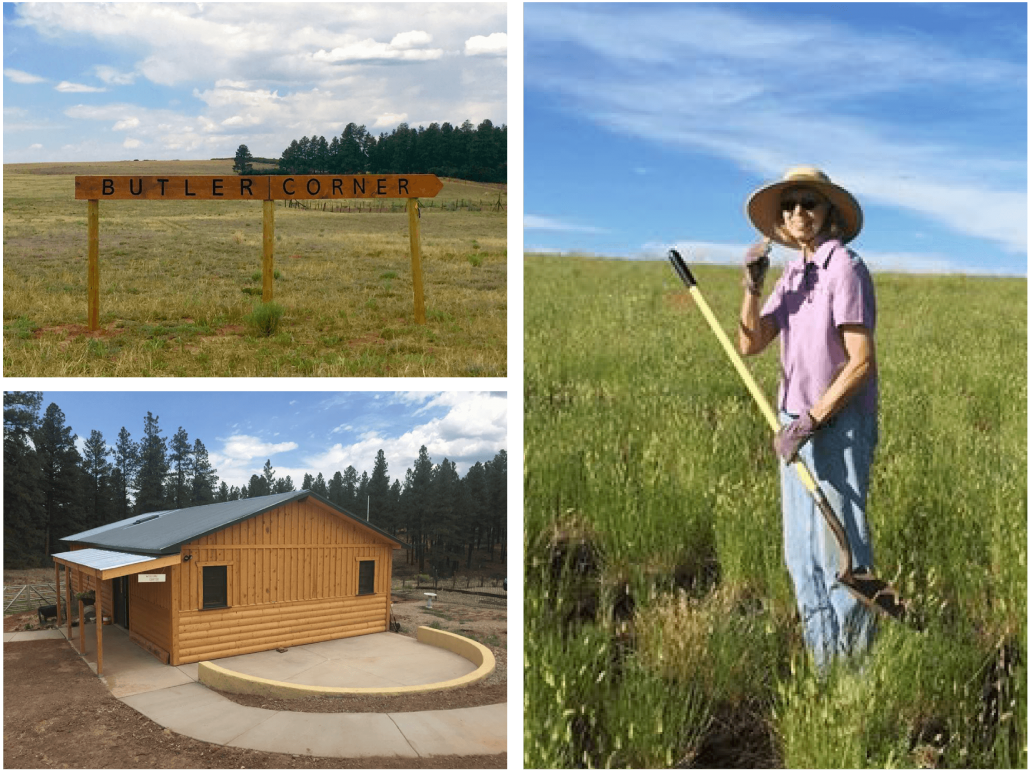
Over the years, Butler noticed her ponds were drying out and eroding gullies were forming in the mountain meadows. Instead of the land holding moisture throughout the year after snowmelt like it used to, the moisture was now rushing off the land through the gullies, causing more erosion along the way. The Nature Center strives to maintain and provide habitat for all kinds of critters, and this lack of moisture was starting to impact the quality of the mountain meadow. To address this issue, Butler met with Bird Conservancy’s Private Lands Wildlife Biologist, Kristina Kline. Both decided the gullies needed to be restored to increase soil moisture in the meadows and bring water back to the ponds. The result would be increased insect production and vegetative cover and diversity, benefitting birds and other wildlife that call this place home.
To do this, they used simple, cost-effective methods that have started to take hold across the arid plains and Intermountain West. Carefully placed rocks within an eroding gully slow down and spread out seasonal water runoff to restore moisture to an arid landscape and retain that moisture throughout the year. Also called Zeedyk structures, named after Bill Zeedyk who popularized this practice for restoration, there are a variety of different structure types, each serving a specific purpose.
On the rocks: structures for managing water
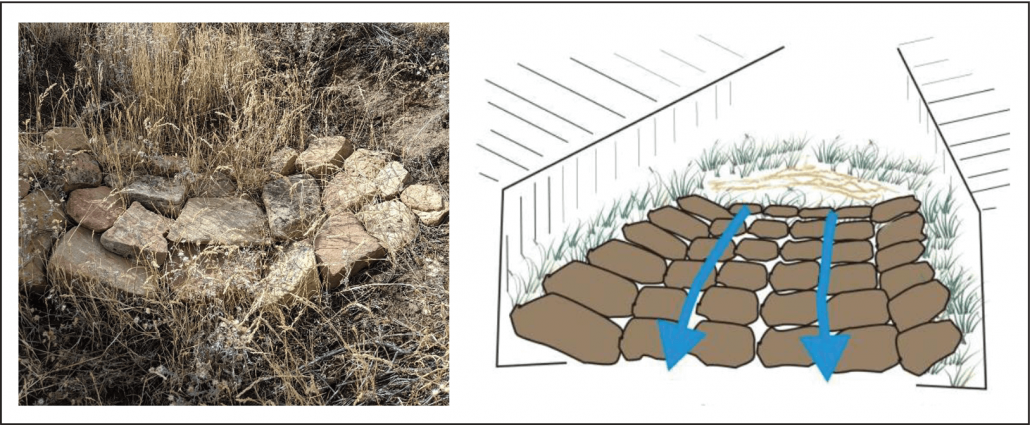
One Rock Dams are built with a single layer of rock in the bed of the channel. They stabilize the channel bed by slowing the flow of water, increasing roughness, recruiting vegetation, capturing sediment, and gradually raising the channel bottom.
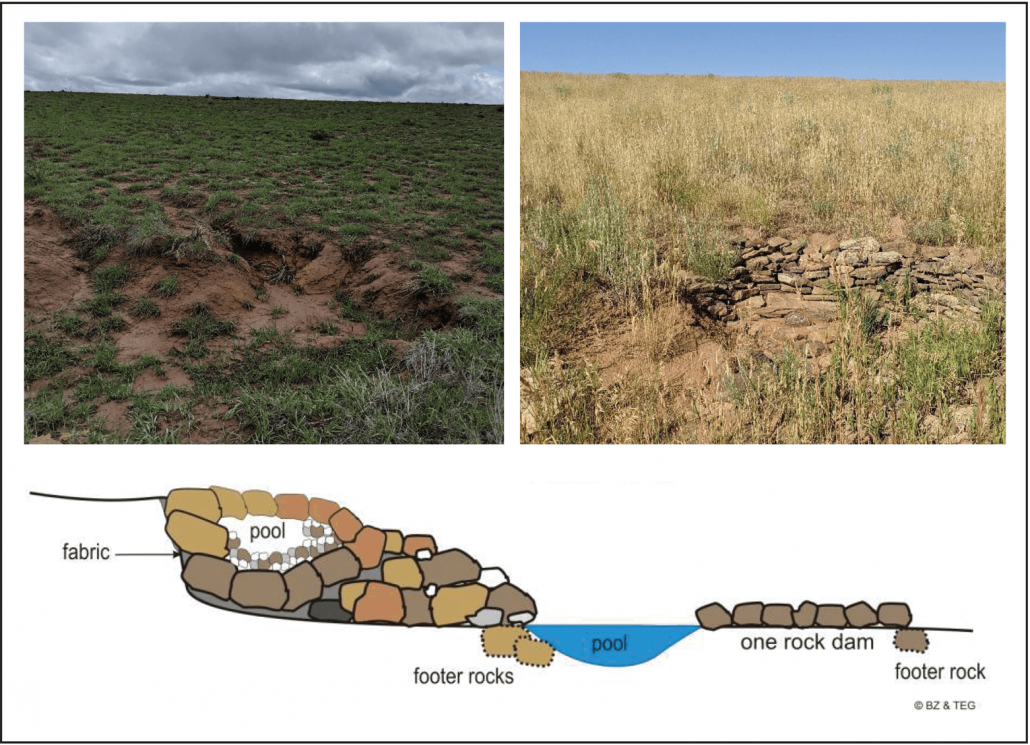
Zuni Bowls are head-cut control structures. A head-cut is basically the start of a gully and is an abrupt vertical drop where the erosion originates. Rocks arranged in Zuni bowls armor and protect head-cuts from migrating upstream. They also dissipate the energy of water falling over the edge and maintain soil moisture which encourages vegetation to establish.
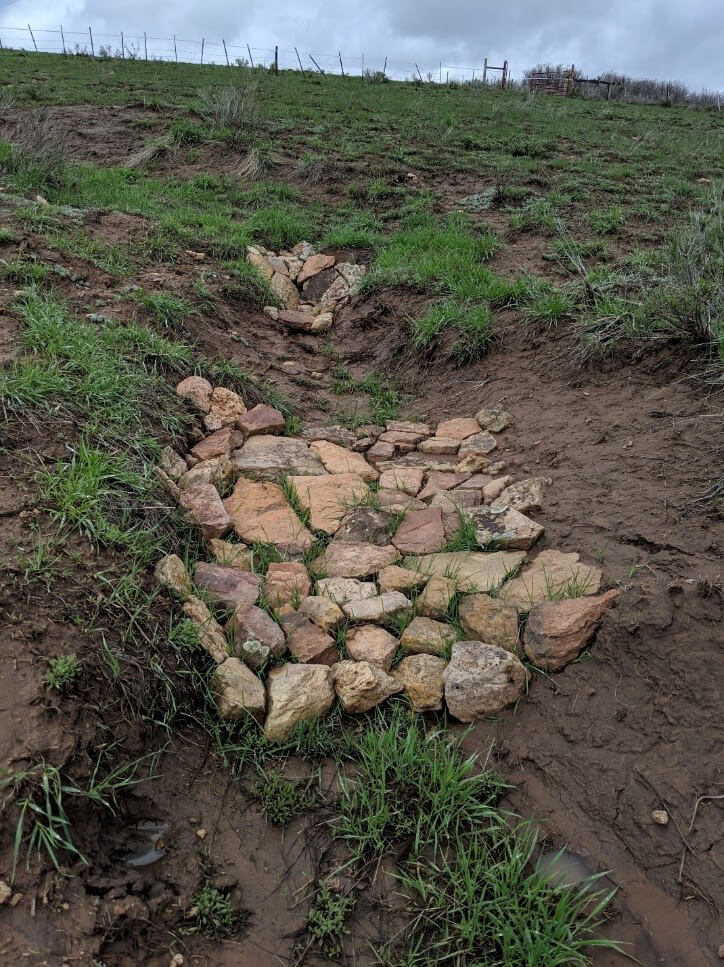
Rock Rundowns are also used to control head-cuts but are more useful in low-energy head-cuts, where the drop is not as drastic. They create a rough surface to slow water down. Rock placement creates cracks where seeds can germinate, and vegetation will grow. These are low-tech structures that anyone can build. No engineering or specialized equipment is required, aside from a wheelbarrow and a shovel.
Readily-available building supplies
The great thing about the Butler Corner project is the Nature Center had all the rocks needed on-site to create the structures.
Here’s where the 5th graders and the rocks came in. On their first field trip, they spent their time learning about habitat restoration, the benefits to wildlife and the structures they would be building. They also explored the property to collect as many rocks as possible. They gathered so many rocks that the axle on the small trailer they were filling broke!

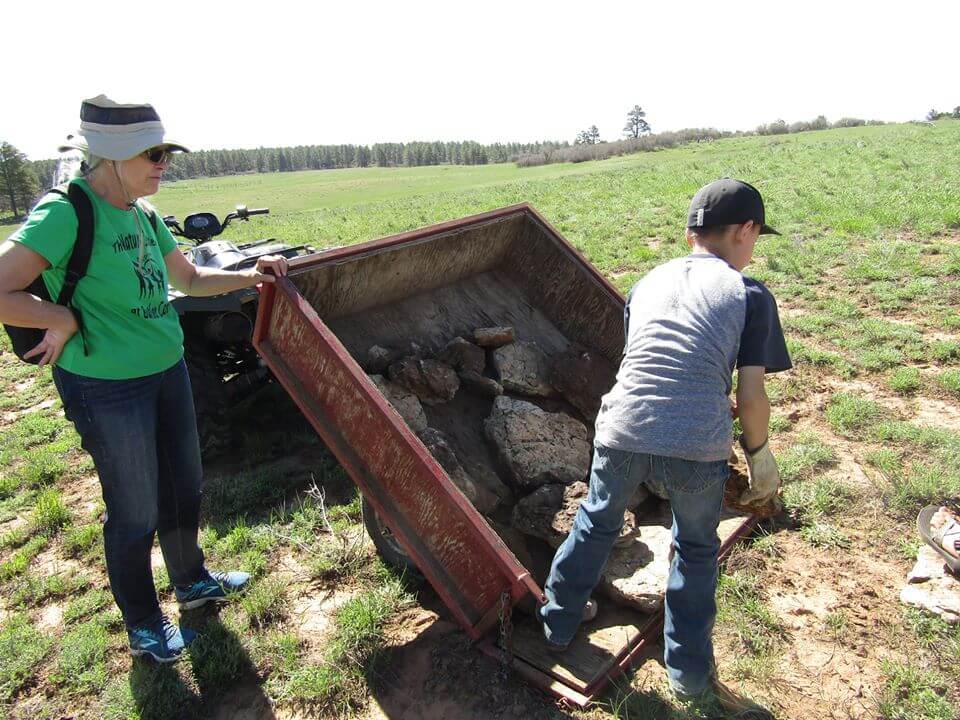
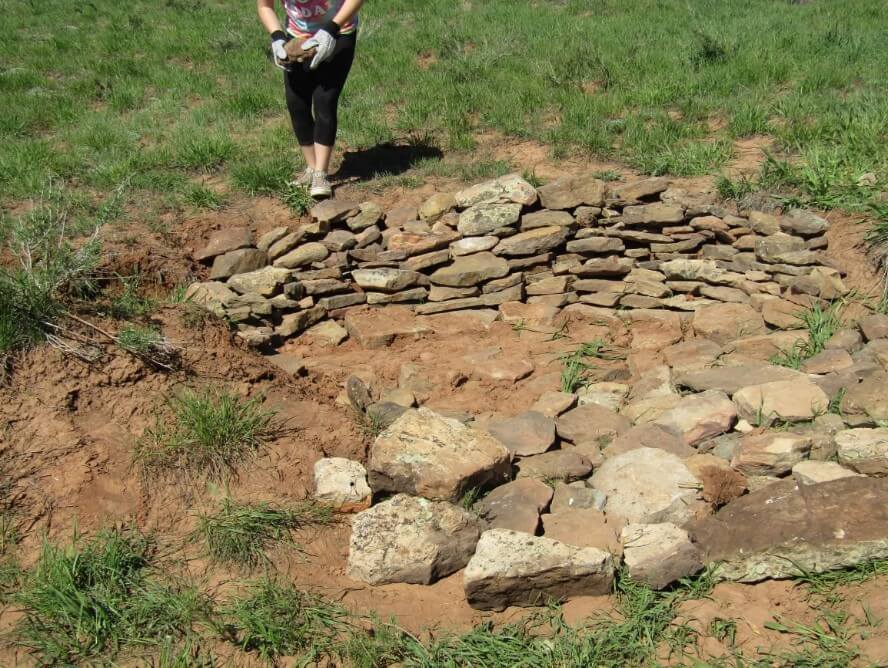
On their second field trip, the 5th graders let loose on collecting rocks and building structures. The students worked together, problem-solved and got down in the dirt to help with on-the-ground restoration. They even had time to fly some kites. These restoration rock-stars did an amazing job, built beautiful structures and are excited to get back at it next year.
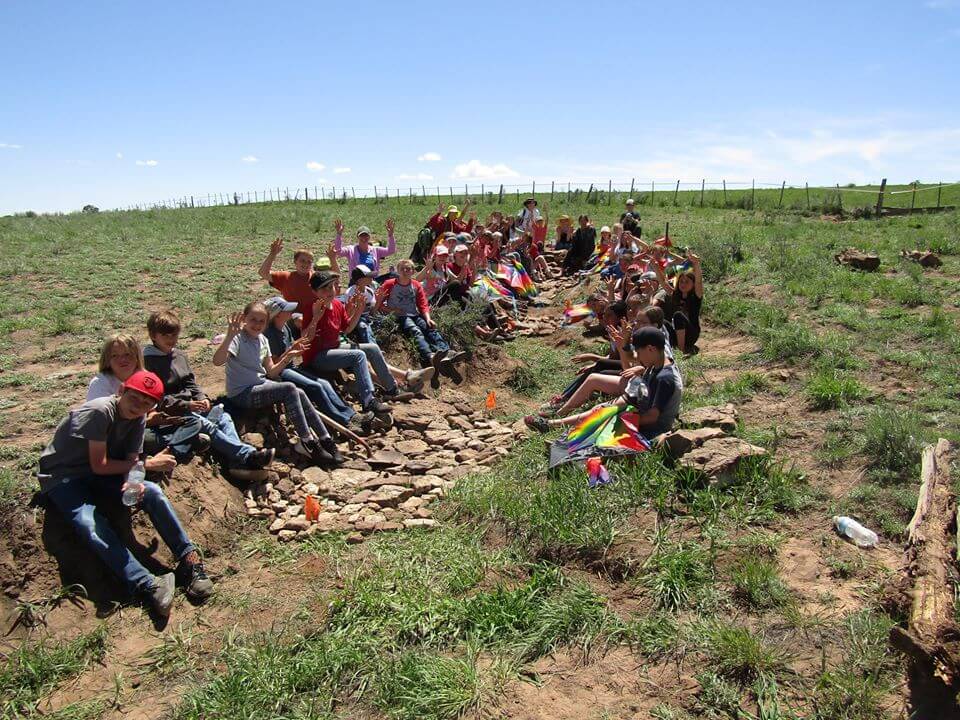
This is a 3-year project that is a partnership between Bird Conservancy of the Rockies, the Natural Resources Conservation Service (NRCS), and the Nature Center at Butler Corner. Funding for the structure building was cost-shared by the NRCS. So far, 20 structures have been built, including one rock dams, Zuni bowls, and rock rundowns. They have been so successful that some of the rock structures are getting hard to find. Just one growing season after structure building, sediment has filled in the cracks and dense vegetation has started to come in. These restored patches on the landscape will start to provide more cover and forage for birds and other wildlife. Sixteen more structures are planned over the next two years, leading to many more experiential educational opportunities at the Nature Center, as well as a more productive landscape for all.
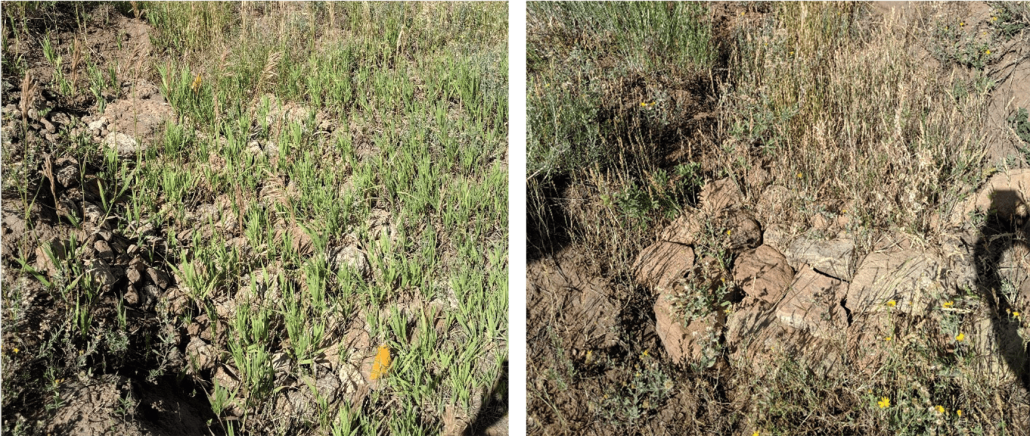
References: Zeedyk, B. and J. Jansens. 2004. An introduction to erosion control. The Quivira Coalition, Santa Fe, New Mexico USA.
Kristina is employed by Bird Conservancy of the Rockies with funding support from NRCS and Colorado Parks and Wildlife.



